“In mid August 2009, I had chanced upon a pair of Long-tailed Shrikes (Lanius schach) collecting nesting materials (below). Subsequent visits to the site yielded some interesting encounters. Here, I wish to share an encounter of a long-tailed shrike taking on a bird as prey.
“On 23 August, this long-tailed shrike was, as usual, perched on the crown of a tree overlooking a vast expanse of grassland. It was waiting patiently for its prey; which were observed to be mostly insects. The bird’s high vantage point proved good as it dived down suddenly into the overgrown grass to target its prey. When it emerged, it flew to perch on a mimosa plant. It had caught a small bird in its beak. I’m unable to identify the prey as the photographs were not of optimum quality as they were taken in haste.
“The shrike looked like it was about to impale its catch on a sharp stem next to its perch (above left), but did not (or was not successful) do so (above right). It hesitated for a while before flying with the bird into the thick foliage of a tree. There, under the cover of the thick foliage, it started tearing up and eating the carcass (below left). After a few mouthful of its catch, it flew with the carcass to another tree where it completed its feast in about 20 minutes (below right).
“Later, the shrike moved into an opening in the foliage and proceeded to preen itself. It was seen stretching its right wing before doing the same to its left wing. It then reached under its belly before reaching for its back and the preen gland (below). Just for the record, it then scratched itself with its left leg extended over its wing.
“It seemed that the Long-tailed Shrike is more successful in hunting its prey on the ground. The success rate of catching birds in flight seemed to be low … As the chase progressed, the space between the birds increased, and the pursuing shrike gave up after a short chase.
“I have observed, on other occasions, that the Long-tailed Shrike was similarly not successful in chasing after some Scaly-breasted Munias (Lonchura punctulata) and a pipit.”
Kwong Wai Chong
Singapore
12th January 2010




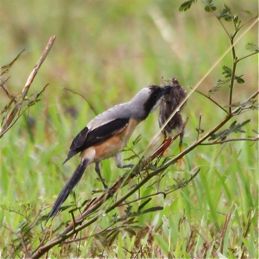
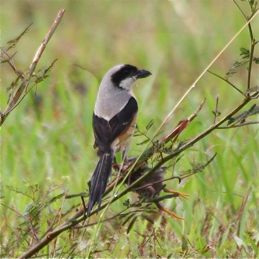
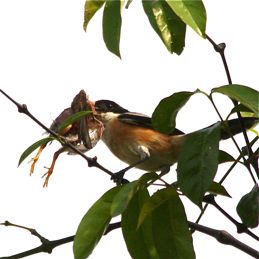
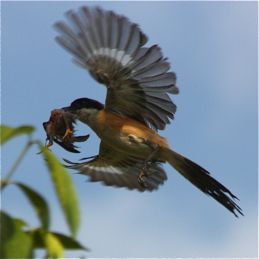
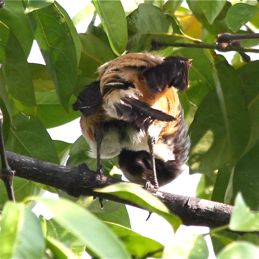
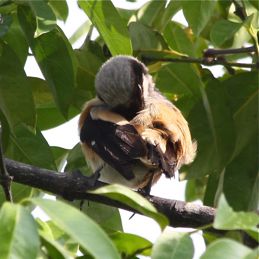







2 Responses
Good flight shots of the long-tailed shrike and nice to know that they are nesting. Fascinating to see the shrike’s strength in carrying and flying with the prey in its beak. It look effortless.
Love the image of the pair of shrikes sharing an intimate moment. Would look forward to see their chicks.
looks like a young prinia/tailorbird kind of bird from size and feet.
The long-tailed shrikes are known to take bird preys, but possibly less observed in recent years as the old birders and old folks living with them knew better that they in fact catch birds.
Once, a guy told me he saw the Brown Shrike caught a Eurasian Tree Sparrow. He is not a bird watcher, but he is convinced Brown Shrike is the culprit upon looking at the photos. He commented that this bird is just slightly larger than the sparrow.